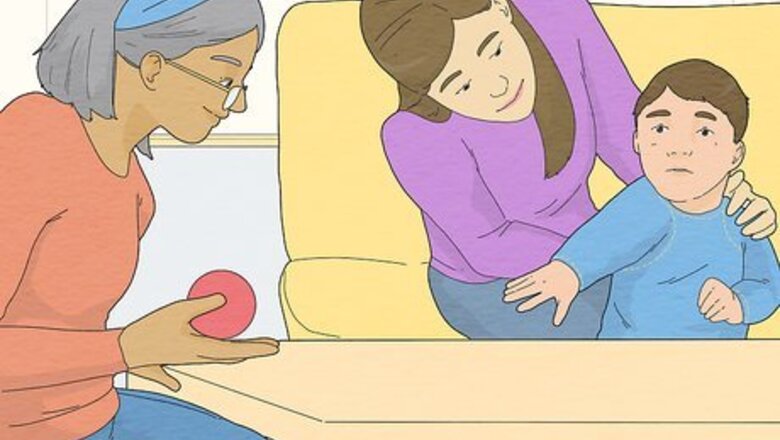
views
Introducing Yourself
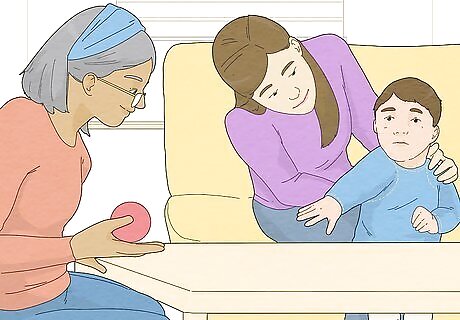
Wait until the toddler is in a comfortable, low-key setting. Big crowds or unfamiliar settings will probably make the toddler more anxious and less willing to interact with you. Whenever possible, save your introduction for a time when the child is in a place they know and around a limited number of people they know. Even in a comfortable setting, the child may not be in the best mood for meeting someone new. If they’re obviously upset or are extremely clingy with a parent or other loved one, wait for a better time to introduce yourself.

Approach them without surprising or interrupting them. This definitely isn’t the time to sneak up on someone! Even if they aren’t looking at you, approach them from the front. Walk slowly and calmly. Stop when you’re close enough to interact with them, but not so close that you’re invading their space. If they’re doing something else, wait for maybe 10-15 seconds until they look towards you. If they still haven’t taken notice of you by this point, go ahead and begin your introduction.
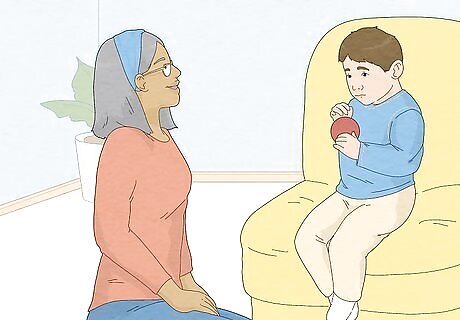
Kneel or sit so you’re at their level. Don’t tower over a toddler—it’s intimidating! Instead, get down as close to their eye level as you comfortably can. If you’re not able to sit or kneel on the floor, find a low chair that brings you down near their level but still allows you to get back up comfortably. The taller you are, the more helpful it is to bring your eyes down near their level. If getting down on the floor isn’t happening for you, wait until the toddler is in a high chair having a snack, then sit down beside or across from them.

Smile genuinely to let them know you’re friendly. Even young toddlers are good at picking up on facial expressions. You’ll probably already be happy to be introducing yourself to a cute kid, so it shouldn’t take any real effort to put a nice, welcoming smile on your face. Try to maintain your smile while you’re observing, talking, and listening. Keep it natural, though—don’t fake a big smile that might actually confuse or frighten them!

Speak to them with a calm, quiet, friendly voice. Pretend you’re the late-night deejay on a classical music radio station! Be soothing, not boisterous, but at the same time don’t be sombre like you’re at a funeral. Be calmly pleasant. If you’re worried about getting the right tone, practice in the mirror a few times beforehand. That way, you can also make sure you’re giving a genuine smile while you speak.

Greet them by name, say your name, and share something about yourself. Even if they’re a young toddler who won’t fully understand what you’re telling them, provide a basic introduction. Remember that the tone of your voice, the smile on your face, and your welcoming posture are at least as important as what you say! You can try a handshake if the child seems receptive, but don’t try to force contact if they’re hesitant. For example, you might say: “Hello, Rosie. My name is Janet, and I’ve been friends with your Mommy since we were both little kids like you!” Or, for instance: “Hi, Daniel. I’m Gene, and I’m your Daddy’s big brother—just like Leo is your big brother.” Or: “Hi, Bob. I’m Miss Davis, and I’m your sister Lucy’s school teacher. We like to read books together!”
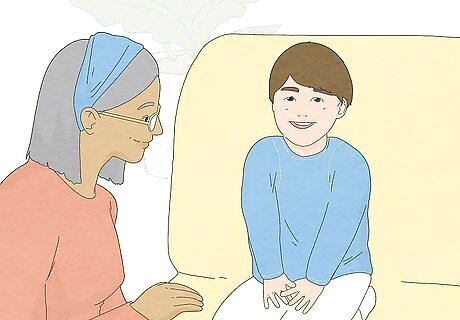
Give them room to respond, but don’t push them to talk. Ask any parent of a toddler—it’s hard to predict how they’ll react to a situation! They may be receptive to your greeting, they might ignore you, or they might cry or try to hide behind one of their parents. In any case, let them respond naturally and go from there. If they respond well, share some more about yourself, ask what they’re doing, suggest a game you can play together, or find other ways to build on your positive introduction. If they ignore you and keep doing what they were doing, give them another 10-15 seconds and try to engage with them again. If they respond poorly, wrap things up for now and try again another time.

Say goodbye when you’re done and let them know you enjoyed meeting them. No matter how well or poorly your introduction goes, maintain a pleasant demeanor throughout and signal to them when the interaction is done. Leave things on a positive note so you can hopefully build on it next time you meet! For instance: “It was so nice to meet you, Drake. I really enjoyed playing blocks with you. Maybe next time we can look at a book together. Goodbye, Drake.” Or: “Thank you so much for letting me take a look at your teeth, Andrew. You’ll have even more teeth next time you come visit my office! Goodbye, Andrew.”
Using Games and Activities
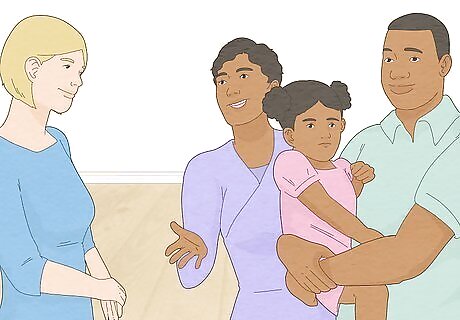
Observe the toddler and ask their parents about likes and dislikes. No two toddlers are alike, of course, so it makes sense to adjust your approach to suit the individual child. While some shy toddlers may do best with a quiet, calm, verbal introduction, others may prefer an approach centered around an activity they know and enjoy. You should always talk to a parent or caregiver before approaching a toddler anyway, so ask for tips about the best way to introduce yourself. After talking to the parent/caregiver, you can also watch the toddler for a few minutes to get a better idea of their likes and dislikes.
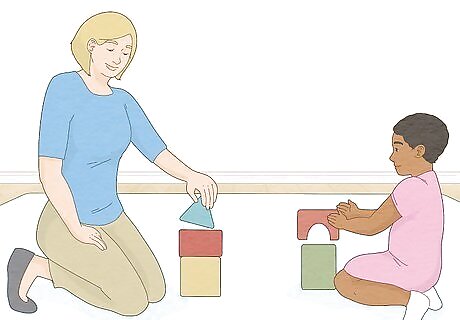
Quietly join in what they’re doing without interrupting them. This is the simplest activity-based method of introduction, and it often works well when a shy toddler is already doing something they enjoy. Approach in a calm and friendly manner, get close without invading their space, get down on their level, and quietly—and without interfering with them—start doing the same thing they’re doing. In many cases the toddler will start interacting with you within a short period of time. For example, if the toddler is playing with wood blocks, grab a few of the blocks that are out of their immediate reach and start stacking them yourself. Keep a smile on your face and a friendly demeanor throughout. You can combine this tactic with a spoken introduction, or simply play quietly until the toddler silently “invites” you to join in their activity. You might get handed a block, for instance!
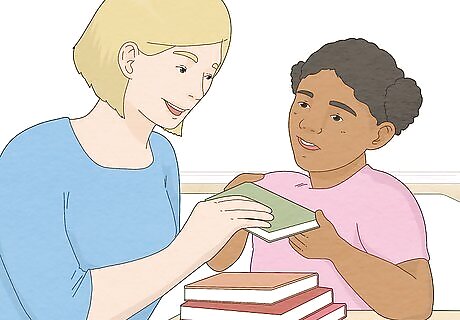
Start doing a simple, fun activity that appeals to them. If the toddler isn’t currently doing an activity that you can join, try instead to initiate an activity that they’ll want to join. You might, for example, start lining up stuffed animals for a parade; begin sorting the pile of toddler books into “big book” and “little book” stacks; or start picking all the dandelions in the yard. With any luck, they’ll want to get involved and you can work together! Use your chat with the parents/caregivers and your own observations to come up with an activity that suits both the toddler’s developmental level and interests.
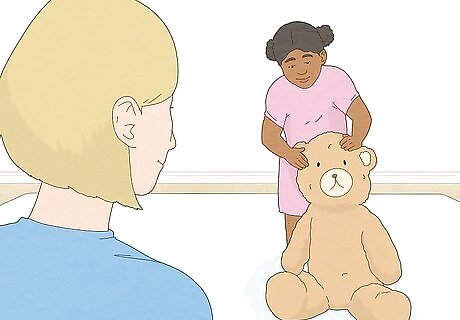
Pretend you’re the shy one and ask for the toddler’s help. This tactic is a form of “play-listening” that works best with kids on the higher end of the unofficial “toddler” age group. Pretend, for example, that you’re shy about approaching the family cat or even a group of stuffed animals. Indicate to the toddler that you could really use their help. Since they’re not shy about their cat or their toys, the toddler will probably be “brave” enough to help you out. For instance, you might say. “Oh, I’m afraid to hug that big stuffed bear! Is there anyone here who can help me? John, you look very brave—can you help me hug the big bear?”

Start a “once upon a time” story that invites them to contribute. Say something like the following: “Violet, I can’t quite remember how my favorite story goes. Can you help me? It starts like this: Once upon a time, there was a unicorn. What do you think the unicorn’s name was, Violet?” If the toddler starts to engage, keep asking leading questions to drive the story forward. Instead of a verbal story, you can also try drawing simple pictures and asking the toddler to help you complete a visual story.


















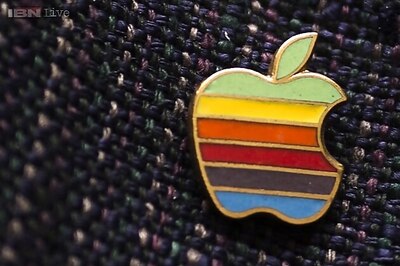

Comments
0 comment